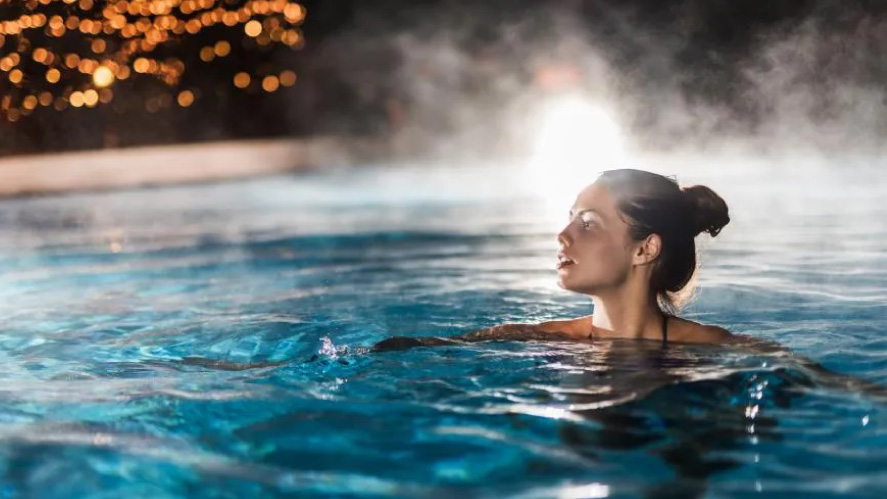When we have a swimming pool in our home what we most want is to be able to use it many months of the year, however we are forced to only enjoy the swimming pool in the summer because it is the ideal climate to cool off in the water, which depending on the state where we live, can be limited in 3 or 4 months. However, there are heat pumps, which allow the swimming pool water to have a pleasant temperature to be used in autumn or even in winter. To make your days in the swimming pool comfortable, safe and fully usable, make sure you find the best team to explain the operation of each element you want to use in the swimming pool to make your summer days endless.
The heat pumps that are used to heat the swimming pool water work by extracting heat from the surrounding air, these heat pumps contain a refrigerant that is heated by the extracted air, the refrigerant is compressed which makes it warmer, then it is passed to a heat exchanger which is the one that heats the swimming pool water. After the above process the refrigerant is allowed to expand so that it cools down and can extract the heat from the air again, then the cycle starts again.
Heat pumps currently used in swimming pools employ a device that heats the water using a small amount of electricity to drive a compressor that is the main part of the pump. The thermal energy produced can be up to five times the electricity used to drive the compressor in conventional on/off models and more than ten times in inverter technology units. What this means is that the electricity consumption for heating swimming pool water can be divided by 10 when compared to other heat-emitting electrical appliances.
Heat pumps work well if the outdoor temperature is maintained above 45 to 50°F; these devices use more energy if the outside air is too cold. These devices are designed to heat water used for recreation such as above-ground and in-ground swimming pools.
The heat pumps that heat the swimming pool do not depend on the light that the sun can give them, they depend on the thermal energy extracted from the air throughout the day or night. It can be seen that even when the cold is above 23 °F there is a saving of 60%.
Also note that heat pumps can be installed on a wall bracket or on the ground, these devices are discreet, quiet, have a controller for easy use, do not emit greenhouse gasses and require little maintenance. They should be installed outdoors, where they have enough space and are close to the technical room, which is where the filtration systems, water treatment, pumps, among others, are located. It is important that the glass is at a considerable distance to avoid splashing, be careful that the air impulsion is not oriented towards the swimming pool as this could cause discomfort to swimmers.
The aspects that you should take into account to know what power your heat pump requires are the amount of water your swimming pool has, the use of covers or if it is outdoors, the weather in your area and the temperature you want the water in your swimming pool to be. By being clear on these aspects you will be able to have the most suitable heat pump for your needs.
Finally, do not forget that having a swimming pool in optimal conditions also requires an adequate maintenance, where it guarantees the useful life of the water, the systems used for the conservation of the pool and to guarantee an ideal space for you and your swimmers, that is why it is essential to always have a kit for cleaning a swimming pool, this will help you to have a safe and clean place.

